problems to study, its main notions, historical review of
syntax theory developmentThe points to clarify….
1) WHAT DOES SYNTAX STUDY?
2) WHAT NOTIONS DOES IT INCLUDE?
3) WHERE LIE THE CONNECTIONS BETWEEN SYNTAX AND OTHER DISCIPLINES?
FindSlide.org - это сайт презентаций, докладов, шаблонов в формате PowerPoint.
Email: Нажмите что бы посмотреть
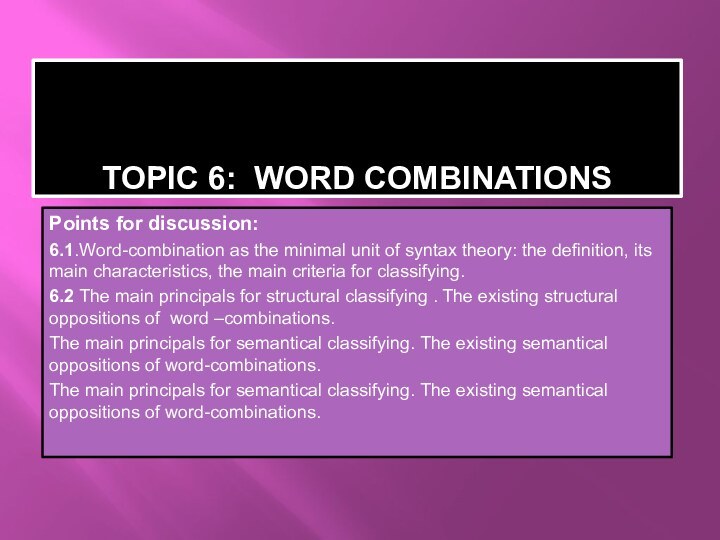
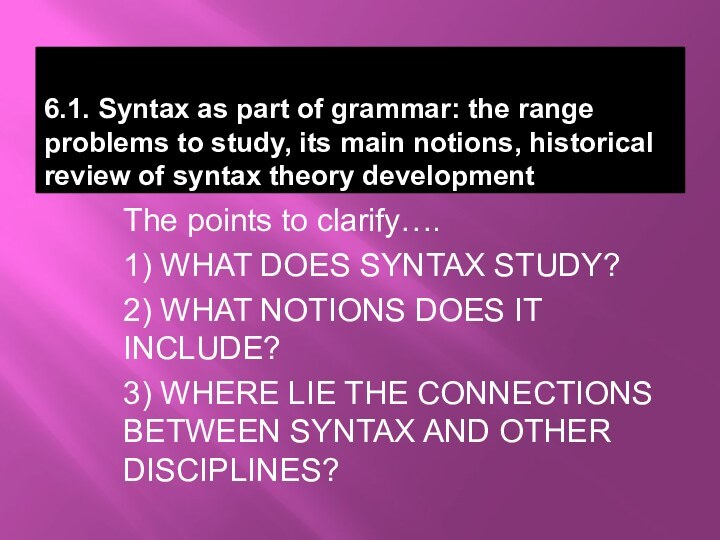

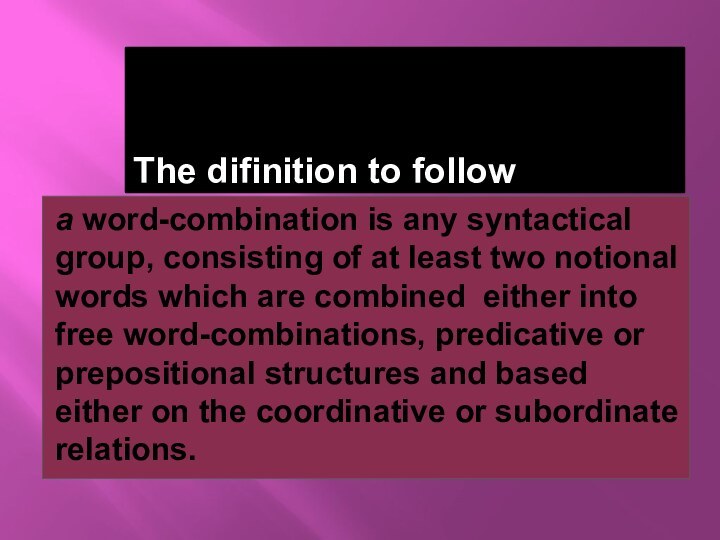
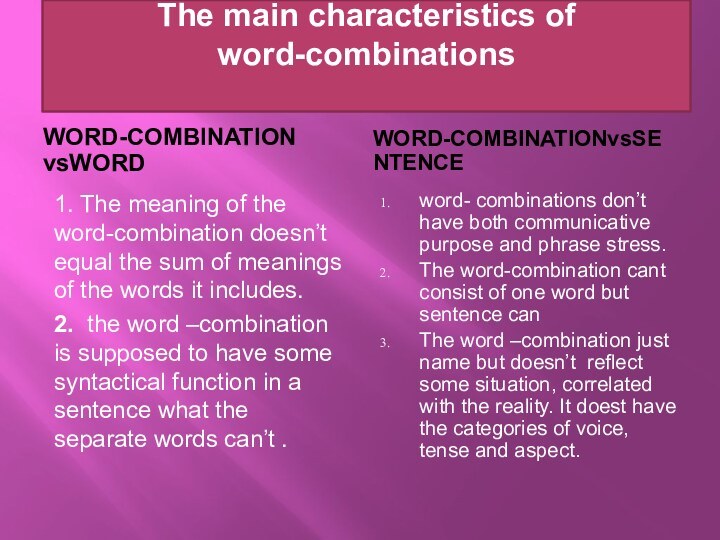
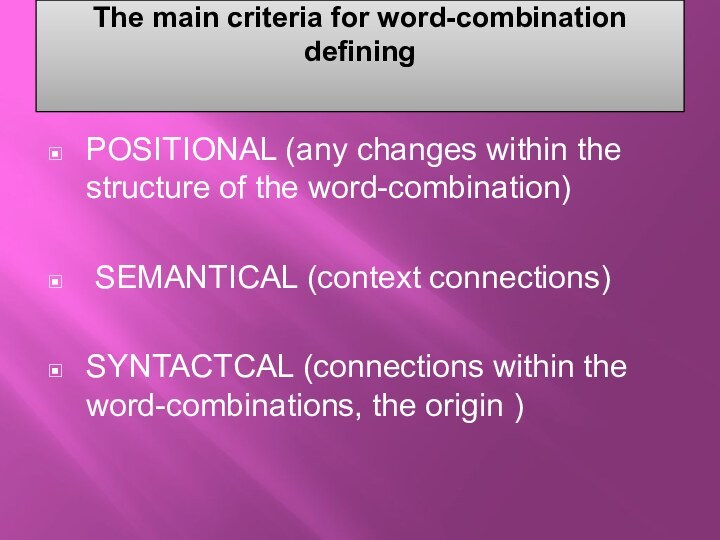
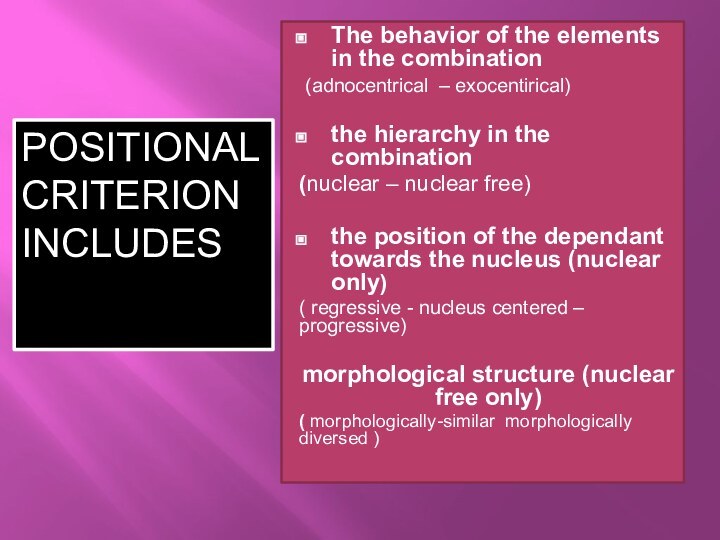
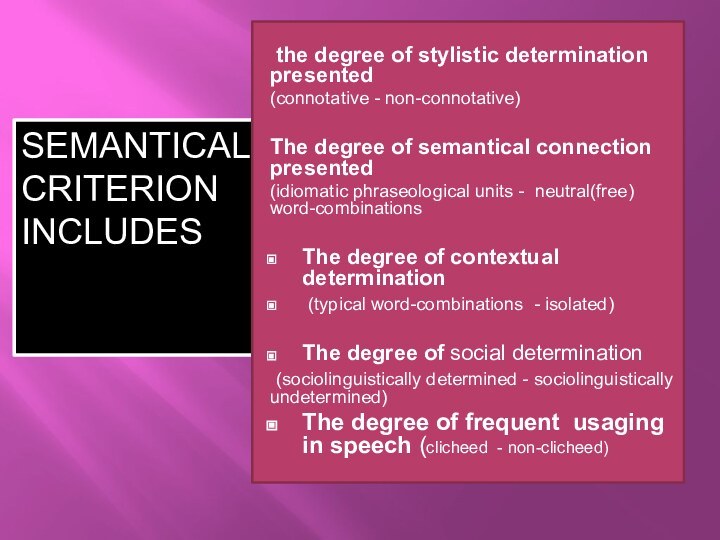

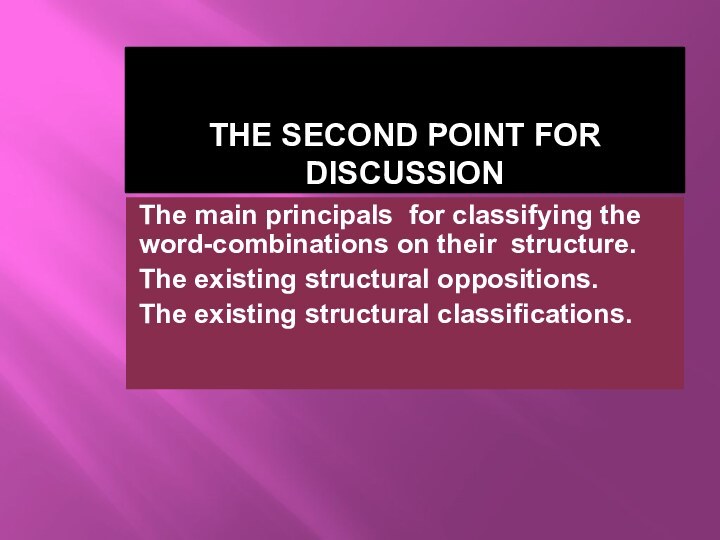

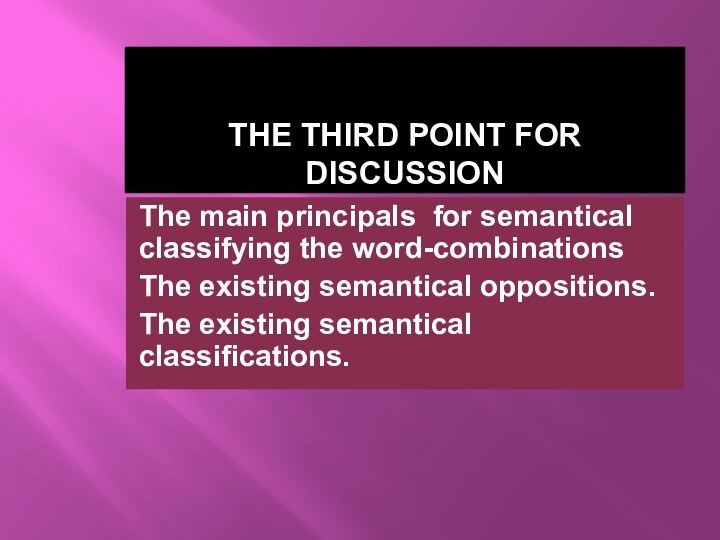
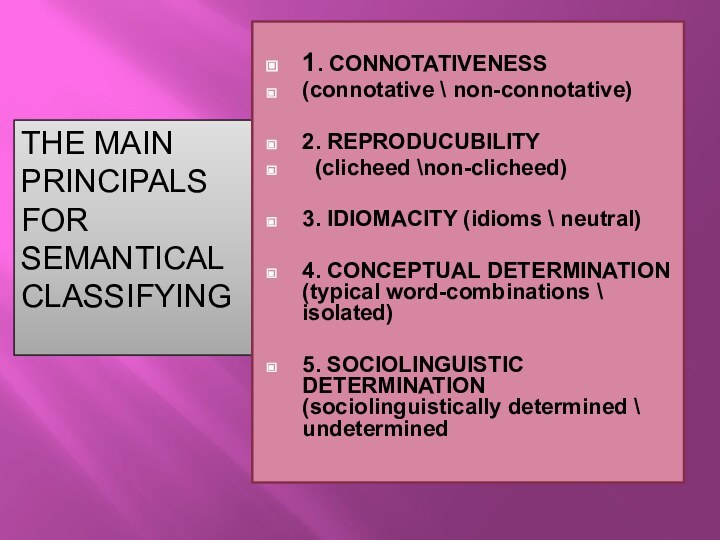
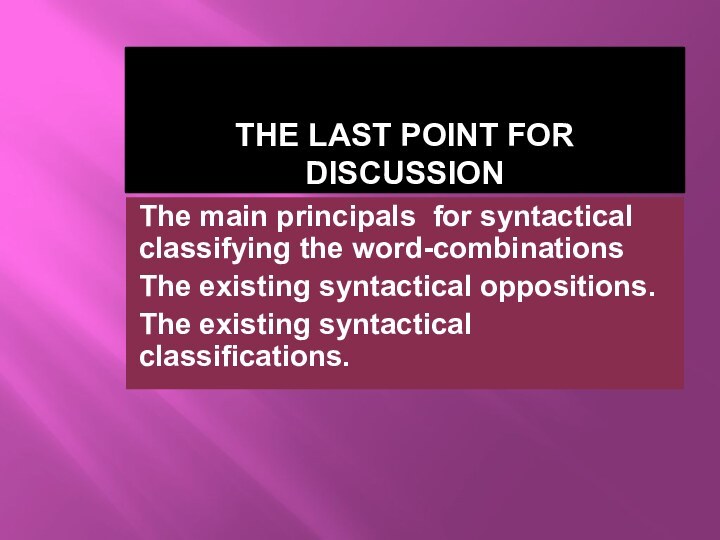
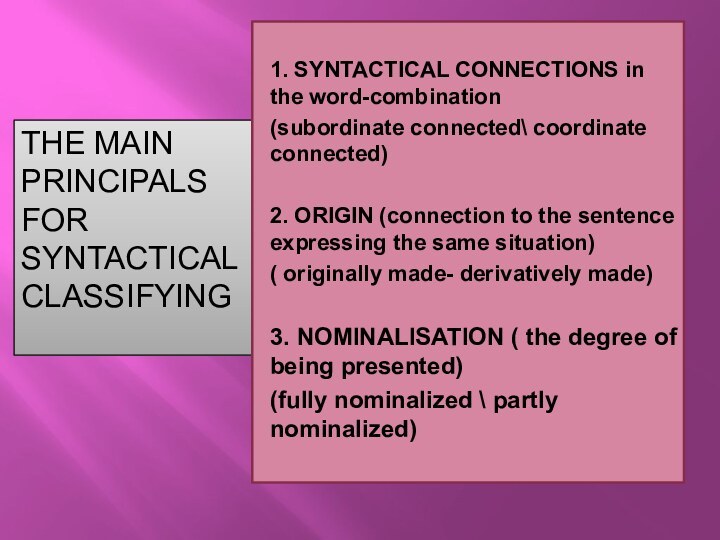

The points to clarify….
1) WHAT DOES SYNTAX STUDY?
2) WHAT NOTIONS DOES IT INCLUDE?
3) WHERE LIE THE CONNECTIONS BETWEEN SYNTAX AND OTHER DISCIPLINES?
word- combinations don’t have both communicative purpose and phrase stress.
The word-combination cant consist of one word but sentence can
The word –combination just name but doesn’t reflect some situation, correlated with the reality. It doest have the categories of voice, tense and aspect.